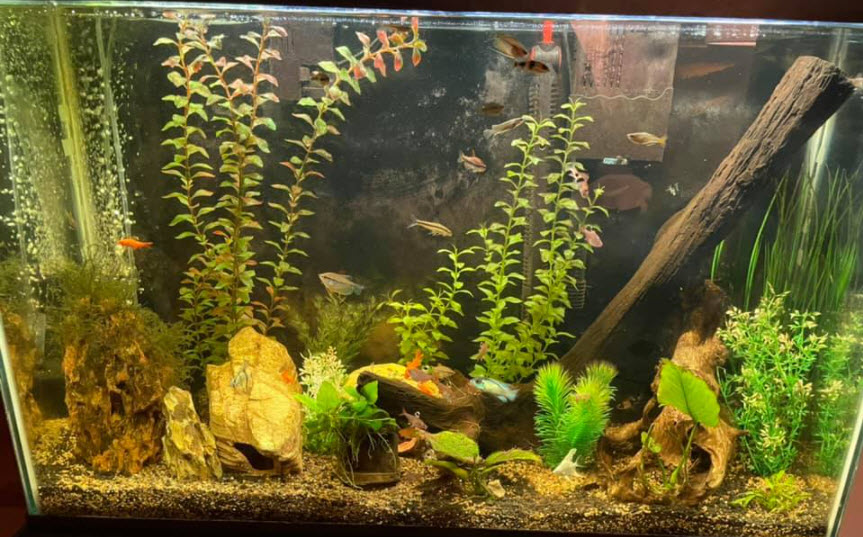
The number of fish and the size of the fish in an aquarium is called the “stocking” of an aquarium. Any beginner to the hobby should start with a few fish under three inches in size and gradually increase either the size or the number of fish in the aquarium over the span of at least a few months. Adding too many fish or too large of fish too soon can overload the filter and the aeration of the aquarium and kill the fish.
If one is new to fishkeeping, stocking is best looked at not by numbers but rather by water clarity. Slowly add some fish. Then see how it goes. Keep looking down the length of the tank and judging how clear the water is. If the water looks even a little bit cloudy do not add any more fish till the cloudiness clears up. Don’t worry about numbers. Gage the stocking by the health of the tank. How clear is the water? When the water is clear, add more fish. Cloudy water? Wait a while, till the cloudiness or “dullness” clears. Then you can add more fish. Simple!
Note that there is only limited “science” involved in the whole topic of stocking. There is a series of journal papers on stocking of zebrafish which support VERY heavy stocking, two to five times the heaviest stocking the author recommends and six to fifteen times the stocking levels at the maximum levels recommended by web stocking calculators. Other than those papers the whole topic amounts to nothing more than one OPINION after another OPINION. And the author’s OPINIONS are no better than anyone else’s OPINION on the topic.
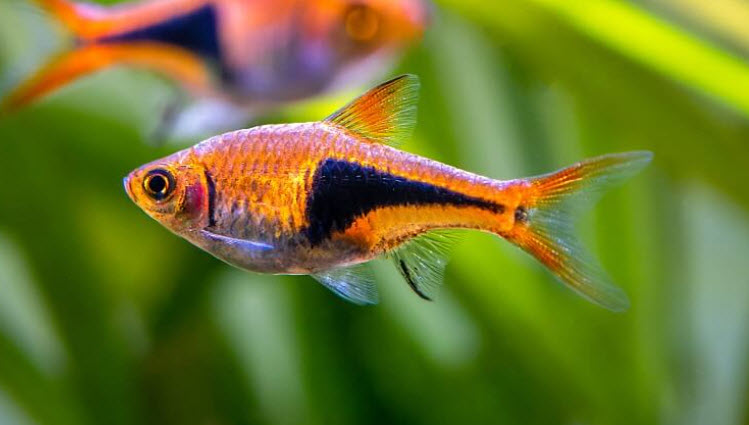
Stocking in More Depth
The basic stocking rule that has prevailed forever is “one inch of fish for every gallon of water”. This is a decent gross approximation for beginners with their first aquarium and fish that are one to two inches long. The “rule” breaks down rapidly above two inches and for more advanced hobbyists. The beautiful Lake Malawi African cichlid peacock aquarium below shows how one can put hundreds of four to five-inch fish into a 100-gallon tank. This is at least five times the “one inch of fish for every gallon of water” level. And the water in this tank is crystal clear, indicating it is not overstocked and well filtered.
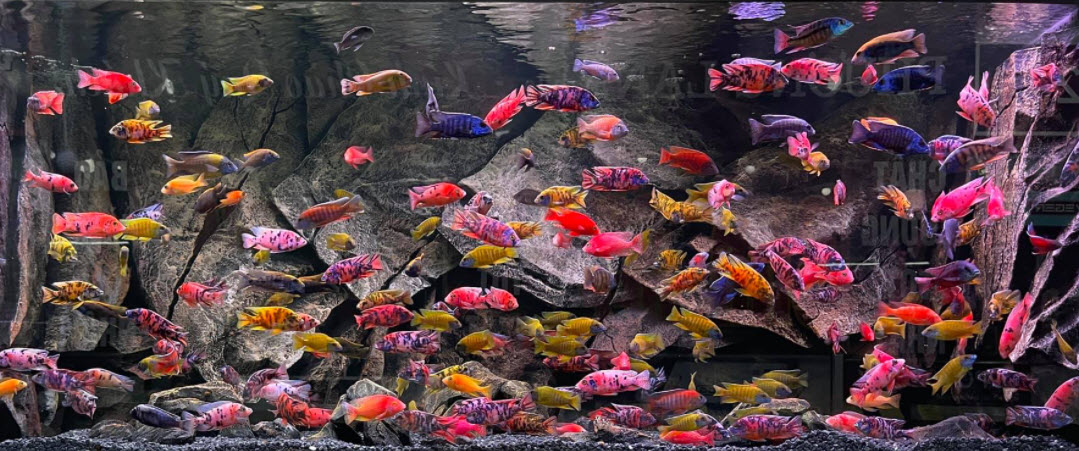
More Accurate Stocking
For fish, more than three inches or for a more accurate assessment of stocking one has to look at volume, weight, and metabolism rather than a “one inch per gallon” standard. If one looks at the volume, weight, and metabolism of the fish, not solely the length, one gets the following tables:
For a 50 gallon tank the stocking numbers are:
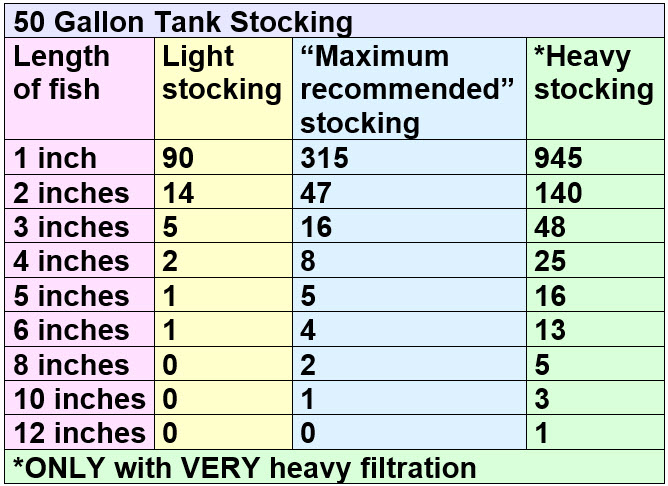
.
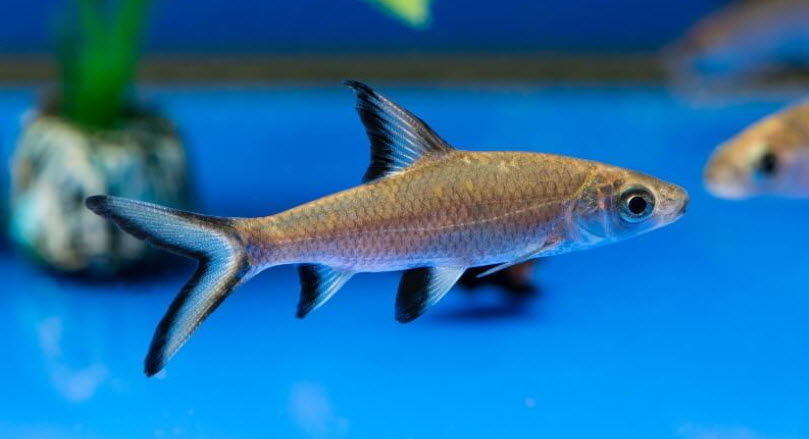
For a 25 gallon the stocking numbers are:
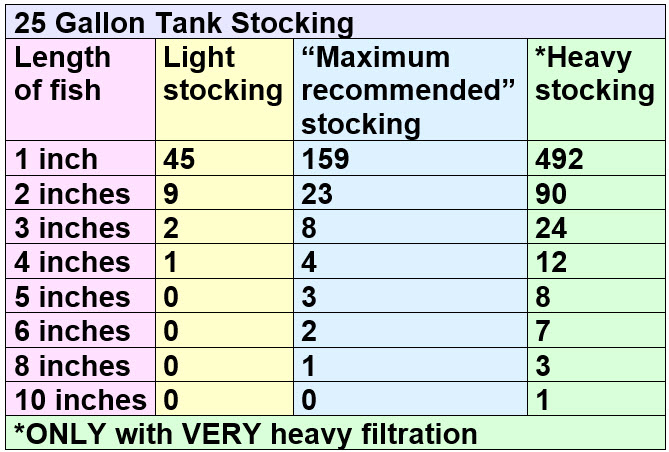
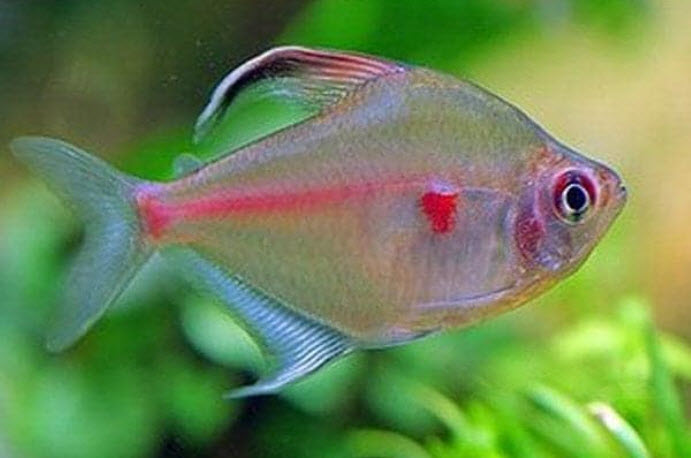
For a ten-gallon the numbers are:
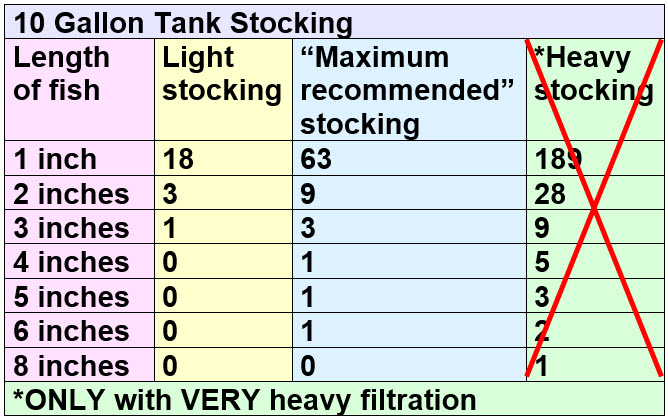
.
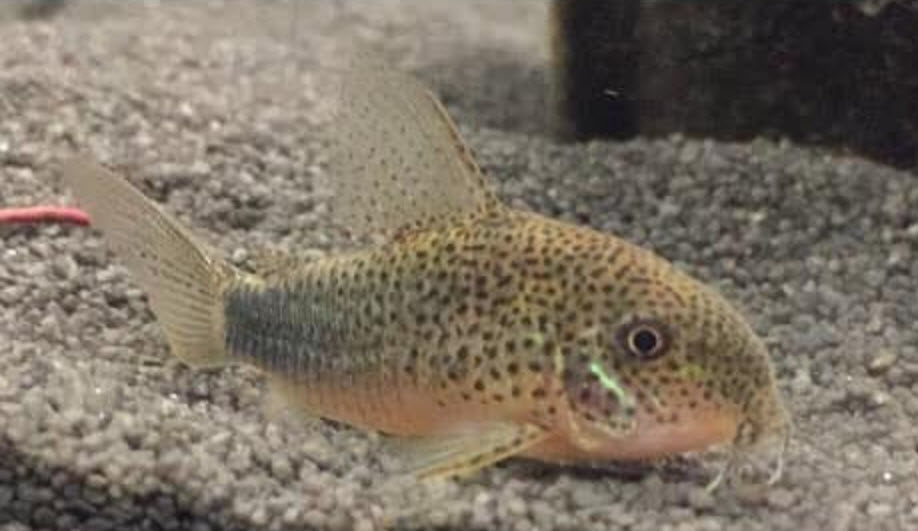
For a five-gallon the numbers are:
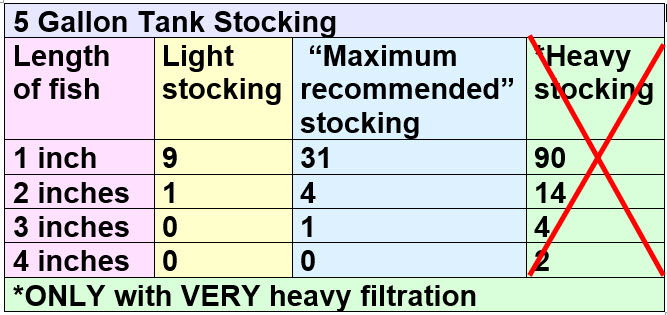
These numbers simply reflect my OPINION as to stocking. There is little “science” involved, These numbers will send some self-appointed social media “experts” (i.e. the “fish police”) into absolute hysteria and get us kicked off many Facebook forums. But, in my OPINION, even the heavy numbers are easily achievable with no negative impact on the fish, SO LONG AS FILTRATION AND AERATION ARE ADEQUATE.
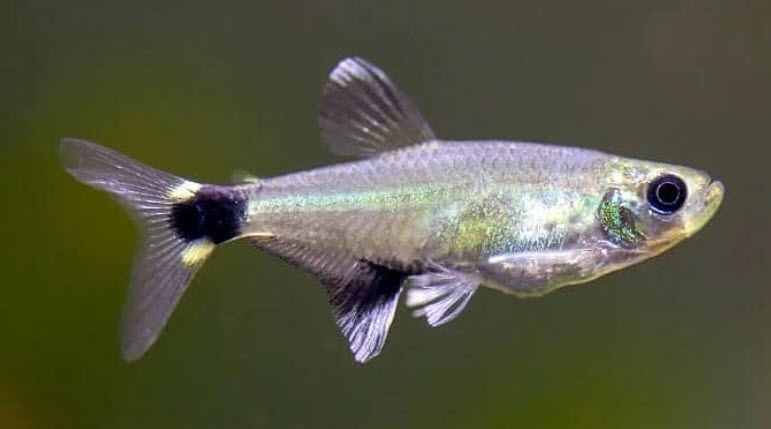
The heavy stocking columns for the ten and five-gallon aquariums have been crossed out for a reason. The filters for small tanks are always very small cartridges or air-operated sponge filters. These filters are just totally inadequate to support heavy stocking.
So small aquariums should not be heavily stocked. If one puts something like a canister filter on a small aquarium, one can think about heavy stocking. But I’ve never seen that done.
Note that the goldfish is very controversial. Common or “narrow-bodied” goldfish can be considered five-inch fish for stocking purposes. So-called “fancy” goldfish with short spines and fat bellies are different and need to be looked at as six-inch fish.
But there is a concerted campaign by PETA to make sure every goldfish in the world has at least thirty gallons of water per fish to swim in. The PETA folks are well-meaning but they are equating a fish with a person. This “anthropomorphism”, gives an animal the characteristics and emotions of a human. This simply isn’t true.
Goldfish are analyzed in more depth in this article:
17.5. Goldfish
.
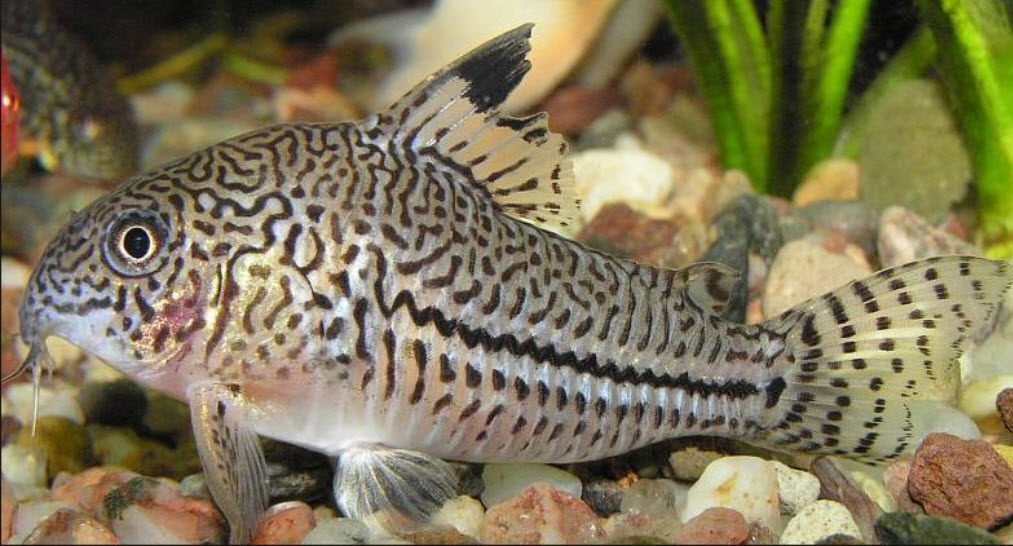
To get a good number with mixed sizes just takes some common sense approximating. Start with the largest fish and work your way down in size. Say you have a 50 gallon and want to stock at the maximum recommended level.
Say you want 10 three inch fish. The 10 three inch fish is very roughly about half the quotas for “Maximum recommended”. That leaves 50% which could be 23 two inch fish (50% of 47). But lets say its ten three inch (roughly 50%) and 12 two inch (roughly 25% of 47). Then you would have room for one fourth (25%) of the 315 in one inch fish or about 80 one inch fish. So it is 10 three inch, 12 two inch and 80 one inch fish in a fifty gallon.
That is all very rough. A more thorough analysis involves using the weight of the fish and gets all complicated totally unnecessarily. The easy way to do it is just to add small numbers of fish till the water turns “dull”. Then stop adding till the water becomes crystal clear. Then add more fish. Easy.
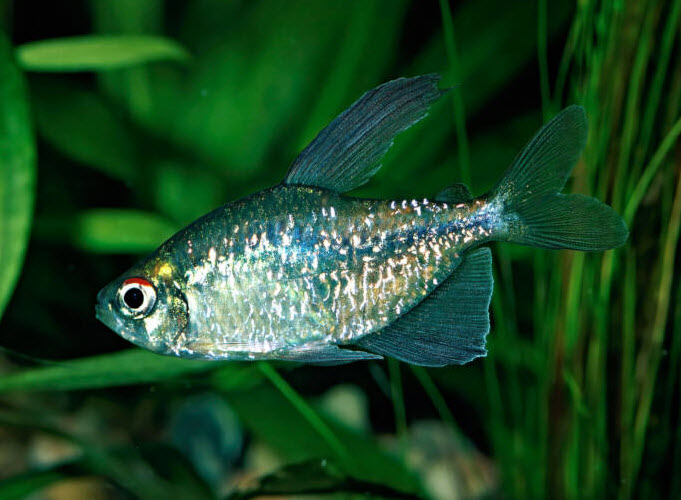
When starting one should only stock at the light stocking level. Then in three or four months, one can move up to moderate stocking. And in six months, the aquarium CAN go into a heavy stocking. Note the emphasis on “can”. A beginner should take things slow.
All this is predicated on the premise that the hobbyist is not cleaning the filter media regularly and is allowing a goodly amount of beneficial brown gunk to build up in the filter media. Thorough cleaning of filter media is NOT a good thing to do. The brown gunk is a beneficial bacteria. “Beneficial bacteria ain’t pretty”.
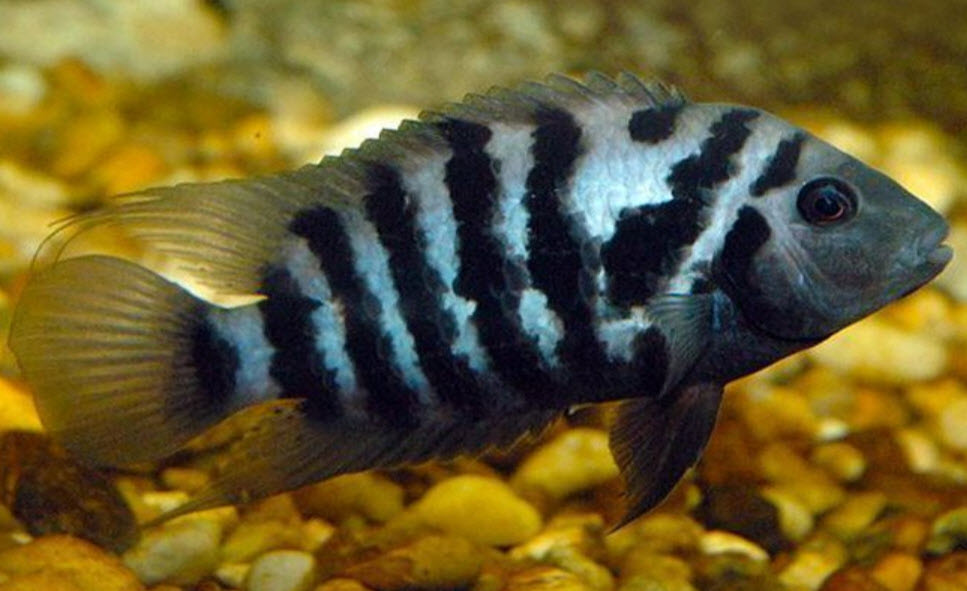
Myths about Stocking
Like everything in the aquarium hobby, there are a large number of myths parroted around social media about stocking. Some of the common myths parroted around social media about stocking, in my OPINION, include:
- Heavy stocking of a fish aquarium will shorten the life of a fish and is “cruel”.
- A fish can appear healthy and fine but not be “thriving” or “happy”.
- Each fish has a minimum aquarium size and length beyond being large enough to swim freely in.
- Fish other than goldfish in a small aquarium will not grow to their full size.
- Have one gallon of water for every inch of fish.
.
These myths are all simply false, in my OPINION.
.
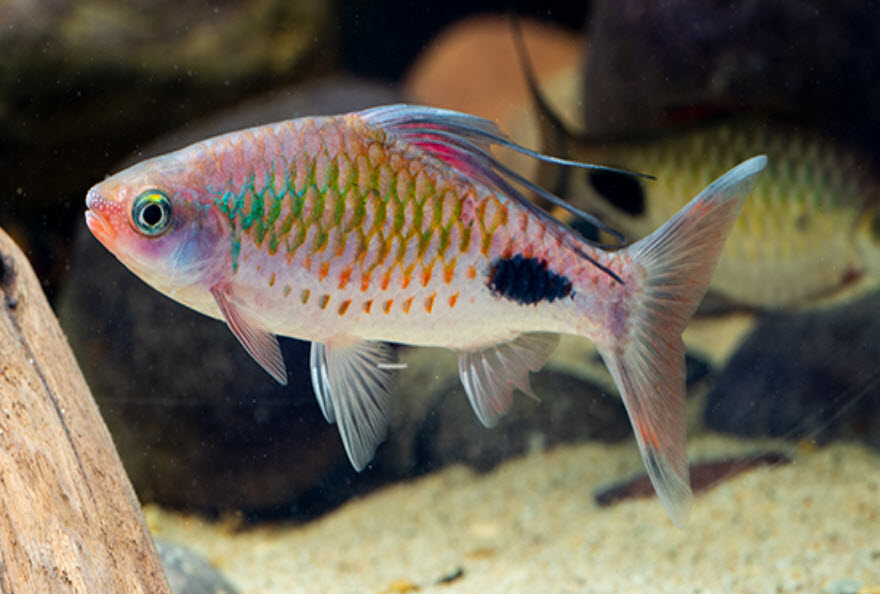
To go into a stocking in far more depth click on this link:
13. Stocking
.
Return to Guidelines for Beginners Menu
.
Aquarium Science Website
The 18 chapters shown below or on the right side in maroon lead to close to 400 articles on all aspects of keeping a freshwater aquarium. These articles have NO links to profit-making sites and are thus unbiased in their recommendations, unlike all the for-profit sites you will find with Google. Bookmark and browse!
.

Dave says
In reply to Wesley …. I always quarantine for at least four weeks. http://aquariumscience.org/index.php/12-3-quarantine-tanks/
Wesley says
Thanks for all this great info! I was looking and couldn’t find info on how to acclimate new fish. I am curious to what you recommend. Should I always isolate new fish and observe for disease before adding?I’m familiar with most methods but would love an article from you on this topic. Apologies if I missed it.
Dave says
In reply to Kenneth …. You will be lightly stocked when all those are grown. With that filtration you can add considerable fish and still do very well.
Kenneth Crawford says
Hello again,
Quick question reference stocking my 29 gallon.
I cycled it using your method and have and external filter (3.9l) volume with static k1 media in place.
Current stocking is 25 chilli rasbora (1 gram per fish when fully grown = 25 grams) and 6 panda corydoras (5 grams when fully grown = 30 grams)
So my estimates, when they’re all fully grown they’ll weigh 55 grams in total. Would this still be in the light stocking range or am I pushing it a little?